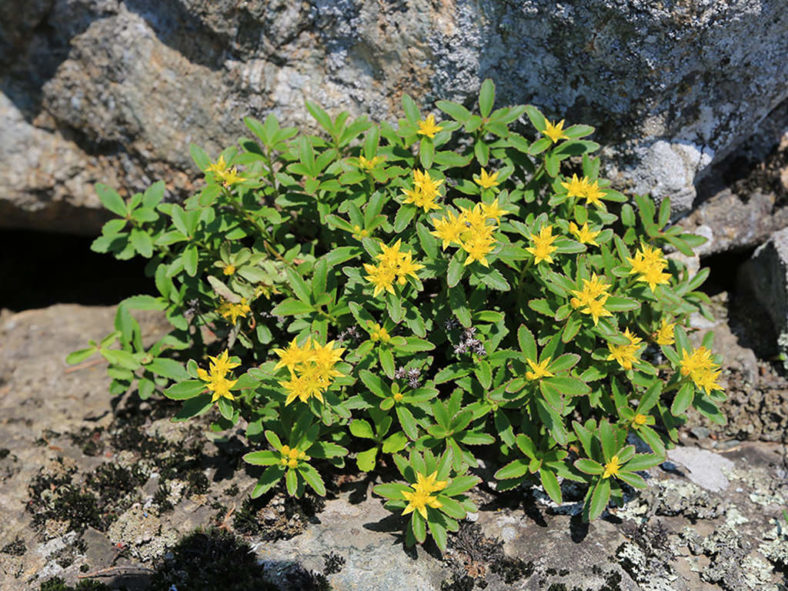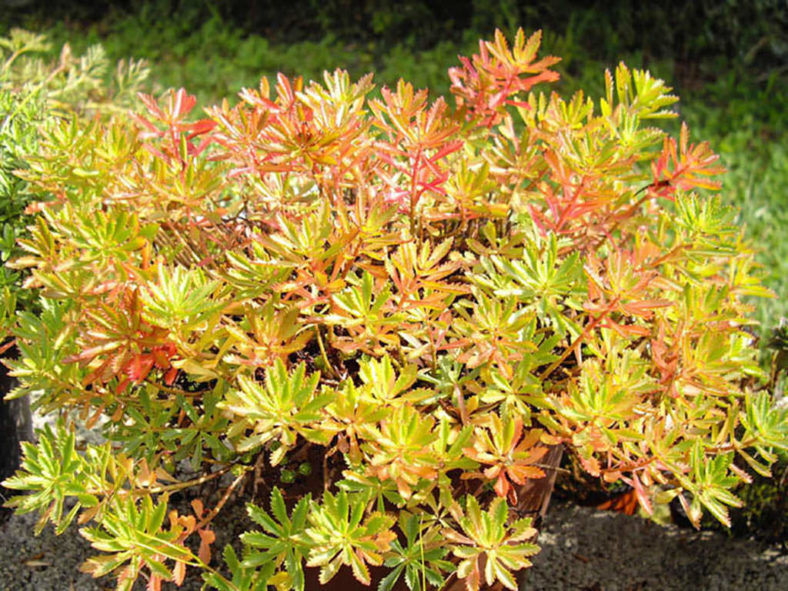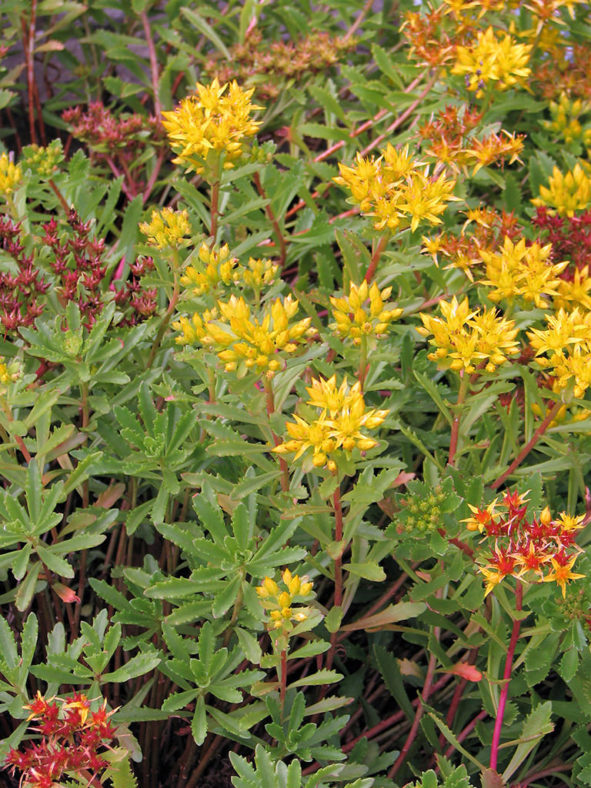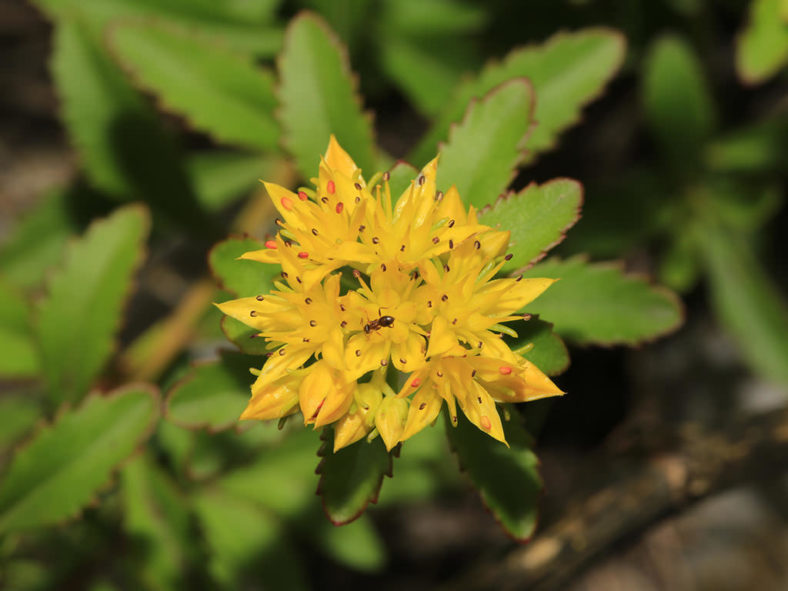Scientific Name
Phedimus sichotensis (Vorosch.) 't Hart
Synonym(s)
Aizopsis middendorfiana subsp. sichotensis, Aizopsis sichotensis, Sedum middendorfianum subsp. sichotense, Sedum sichotense
Scientific Classification
Family: Crassulaceae
Subfamily: Sedoideae
Tribe: Sedeae
Subtribe: Sedinae
Genus: Phedimus
Etymology
The specific epithet "sichotensis (sich-oh-TEN-see)" refers to the Sikhote-Alin, a mountain range in the Russian Far East, where this species mainly occurs.
Origin
Phedimus sichotensis is native to Russia (Far East).
Description
Phedimus sichotensis, formerly known as Sedum sichotense, is an attractive succulent with ascending stems that bear narrow, bright green leaves with serrated margins. It is more a clump-former than a spreader and can grow up to 4 inches (10 cm) tall, slowly spreading about 18 inches (45 cm). The leaves turn brilliant red in fall and winter.
Small, yellow, and star-shaped flowers appear in early summer.
Phedimus sichotensis is similar and almost indistinguishable from the small forms of the variable Phedimus kamtschaticus. It also looks similar to Phedimus middendorffianus.

How to Grow and Care for Phedimus sichotensis
Light: This light-loving plant tolerates partial shade but prefers full sun and grows best in warmer environments. Plant P. sichotensis in an area of your garden that gets at least 6 hours of sunlight a day.
Soil: This succulent thrives in any well-drained soil. Good drainage is critical for preventing root rot or fungal diseases.
Hardiness: P. sichotensis tolerates frost and can stay outdoors when the temperature drops below freezing. It can withstand temperatures as low as -30 to 30 °F (-34.4 to -1.1 °C), USDA hardiness zones 4a to 9b.
Watering: The best way to water your P. sichotensis is to use the "soak and dry" method. Get the soil completely wet, and then wait until the soil is dry before watering again.
Fertilizing: Feed with low-balanced fertilizer to keep your plant happy and healthy. Use a diluted dose of half the strength recommended on the package.
Repotting: Repot your plant when it outgrows its current pot by moving it out to a larger container to hold the plant better. Spring is the best time to repot P. sichotensis. Make sure the soil is dry before you begin the repotting process.
Propagation: Like all members of the genus Phedimus, this succulent can be grown from seeds, division, or stem cuttings. Dividing your P. sichotensis is the best method to propagate because it is easy and usually very successful. Divide in spring when new shoots are seen. P. sichotensis is also easily propagated from cuttings. Sow seeds in spring in well-drained soil in a sunny position.
Learn more at How to Grow and Care for Phedimus.
Toxicity of Phedimus sichotensis
P. sichotensis can be mildly toxic to humans and animals.
Links
- Back to genus Phedimus
- Succupedia: Browse succulents by Scientific Name, Common Name, Genus, Family, USDA Hardiness Zone, Origin, or cacti by Genus
Photo Gallery
Click on a photo to see a larger version.


